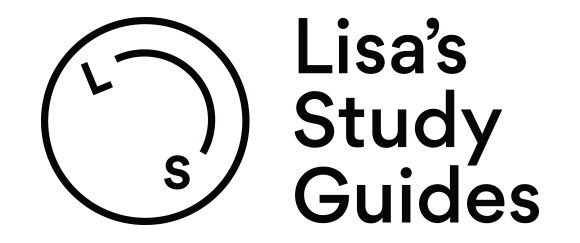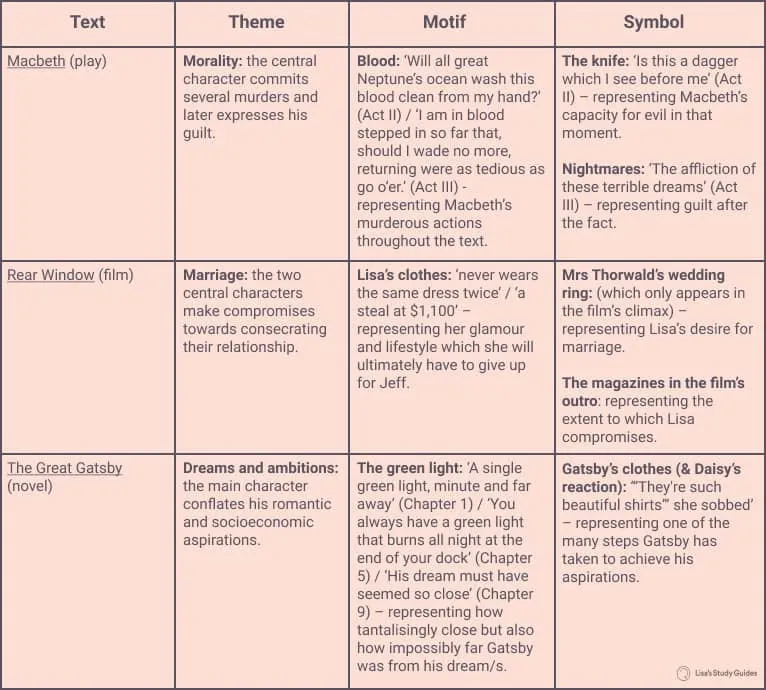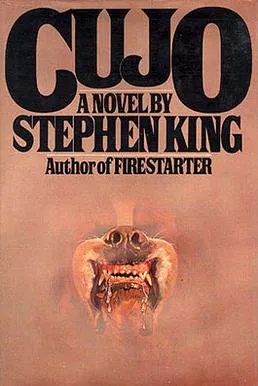Introduction
Arguably one of the greatest modern playwrights of our time, Tennessee Williams produced some of the best post-war 1950’s American plays that have now engrained themselves as classics. After the conclusion of the second world war, America was pervaded with hypermasculinity, deep levels of insecurity and a desperate need to regain the pre-war success of the 1920s. During the 1950s, the United States began to regain its economic success and spirits were high as ever; however, this may only have been ostensible. Beneath the surface of such success lurked unshaken expectations on both men and women and deep-rooted bigotry.
In this article, we will get to know how these concepts are explored in ‘Cat on a Hot Tin Roof’ and examine why this text is important in the context of Lit Perspectives and Close Analysis.
Characters Analysis
Brick
Brick is too numb to feel much of anything any more; he is a drunk and cold shell of what he once was. Since the death of his friend Skipper, Brick has retreated into solitude and emotional aloofness, and the only emotions that he can express are disgust and boredom. The other characters can only coax an emotional response out of him when they mention Skipper
Maggie
Maggie is a traditional 1950’s beauty, she is lively, gorgeous and has a deeply sexual presence. She spends the majority of the play trying to get Brick to sleep with her- both to satisfy her own needs, and to allow her to conceive a baby. This which would guarantee her share of the Pollitt family wealth.
Big Daddy
Big Daddy, like Brick, gets a lot of undeserved attention and love; this is because he sits upon the Pollitt wealth he built. He worked hard for economic success, and now he wants to enjoy it. He is uninterested in Big Mama and treats her with little affection or respect.
Big Mama
She is an older version of Maggie - more dramatic, needier, having let herself go. She loves her husband unconditionally despite his cruelty and indifference to her. Like Big Daddy, she cannot help but prefer Brick to Gooper because he is so much like Big Daddy.
Gooper
Brick’s older brother but has lived in his shadow since the day he was born. While Brick got the attention with looks and football, Gooper married into society and became a successful lawyer. But the unfair attention and focus on Brick has made Gooper vengeful and petty, and so it is out of both greed and spite that he actively campaigns for control of Big Daddy’s estate.
Mae
Gooper’s wife who has all of his greed and sourness, without any of his justifying history. She taunts Maggie’s lack of motherhood by parading her plethora of children around the house.
Concepts and Concerns
TIP: Concepts and concerns should form the basis of your analysis whether you are doing a close analysis or a literary perspectives essay!
MENDACITY VS TRUTH
The central tension in the play is underscored by mendacity, lying and deception. The repressed truth is constantly on the verge of being unleashed and it is the “inadmissible thing” that pervades the family. The two primary sources of mendacious repression are Brick’s homosexual desires and Big Daddy’s imminent death from cancer. Ironically, it is these two who value integrity and honesty the most.
When Big Daddy finally finds out the truth about his impending death he exclaims: “By all the goddam lies and liars that I have had to put up with, and all the goddam hypocrisy that I lived with all these forty years that we(big mama) been living together”
In a final moment of existential dread and disgust, Brick resignedly claims that “mendacity is a system that we live in. Liquor is one way out and death is another”. These are the fates that are destined for Brick and Big Daddy respectively.
The truth (if there can be such a thing) is that both Brick and Big Daddy are loved so ardently by their partners, but they blinded by their dishonesty to themselves. It is because Brick cannot come to terms with his own sexuality and Big Daddy cannot fathom his inevitable death that lies, and deceit is perpetuated in the text.
MASCULINITY AND HOMOSEXUALITY
Williams himself was gay and lived in a society that constantly repressed and shamed it as a deeply sinful practice and associated it with failed masculinity. Thus, he explores the deep turmoils of homosexuality in the 1950s and its implications on manliness, bigotry and society.
Whilst not stated explicitly, it is implied that Skipper confessed his love to Brick; whilst Brick felt the same way, he knew this would not be accepted by society. Consequently, he shuts Skipper down and later that night, Skipper commits suicide. Brick cannot admit the truth to himself because in his mind “purity” and “homosexuality” are mutually exclusive, due to his own internalized homophobia and even when Big Daddy makes Brick face his desires and the guilt that pervades him; he cannot escape the bigoted societal norms imbued within him
Williams paints an image of distress, pain and grief caused by the prevailing homophobia of the 1950s. Brick is crippled both by his failure as a man and his failure to be true to himself.
THE AMERICAN DREAM
Back in the 1950s, the American Dream was the dream that everyone was expected to aspire for was much more conservative. It included a traditional family with a stay at home mother, hard-working and masculine father, 2-3 children, a home and money, lots of it!
The Pollitt family truly embodied the American Dream. With their self-made fortune, successful sons (though Brick is now a mess) and even grandchildren. In many aspects, Gooper and Mae fulfil the expectations of the American Dream much more than Brick and Maggie do; they have children, success and ambition. They attempt to use this to their advantage in their bid to win over Big Daddy’s estate but even that fails to sway Big Daddy’s favouritism for Brick.
Brick is as resigned and aloof to the idea of wealth and tradition as he is to his wife Maggie. His repressed homosexuality already divorces him from the ingrained social expectation of the American Dream and it disappoints him to pretend to desire the same things his brother Gooper does. This, ironically, only makes him more favoured by his parents.
In a world of strict expectations and immovable bigotry, there is no room for homosexuality, and this disappoints no one more than Brick himself. In his world, the very essence of his being contradicts the dream that everyone is taught to value. Williams asks readers to consider the consequences of such restrictive beliefs, he questions the American dream at a fundamental level by asking: so why do we all have to want the same thing?
MOTHERHOOD AND FEMININITY
What does it mean to be a woman? For Mae, that means being a loving housewife and being able to bear children. In the petty feud for Big Daddy’s will, she insults Maggie’s childless state, she is less of a woman because of it. Of course, the reason Maggie cannot have children is that Brick is unwilling to sleep with her. Again, even though Mae has provided Big Daddy and Big Mama with a plethora of grandchildren, they still prefer Maggie’s young and sensual energy.
Williams attempts to undermine the characteristics that were supposed to define women as feminine through Maggie. Moreover, women were supposed to be passive players in the family, to do their husbands bidding and to be polite and proper at all times. Maggie is none of these things. She is unapologetically sexual, unwaveringly ambitious in her pursuit of the Pollitt family wealth and determined to cement herself as Brick’s partner although she knows of his homosexual desires. In a society where women were not supposed to have dreams let alone pursue them, Maggie is a “cat on a hot tin roof”, chasing her dreams with careless disregard of established hetero norms.
Literary Perspectives
Now we get into the tricky stuff! This is one part of your exam and is the Unit 4 Outcome 1 SAC so it’s important that you get a competent grasp of the task! TIP: Follow this link to get an overview of the literary perspectives task (I’m thinking of linking the ultimate lit perspectives guide here, let me know what you think)
Some prevalent perspectives should jump out at you immediately just by looking at the Concepts and Concerns. Remember that you don’t have to choose just one perspective, it’s more important that you develop an overall interpretation of the text and incorporate the buzzwords that reflect your perspective. Use your perspective/interpretation as a lens to the concepts and concerns mentioned above as a springboard for your analysis
Literary Perspectives
Now we get into the tricky stuff! This is one part of your exam and is the Unit 4 Outcome 1 SAC so you must get a competent grasp of the task! TIP: Follow this link to get an overview of the literary perspectives task (I’m thinking of linking the ultimate lit perspectives guide here, let me know what you think)
Some prevalent perspectives should jump out at you immediately just by looking at the Concepts and Concerns. Remember that you don’t have to choose just one perspective, it’s more important that you develop an overall interpretation of the text and incorporate the buzzwords that reflect your perspective. Use your perspective/interpretation as a lens to the concepts and concerns mentioned above as a springboard for your analysis
Here are some general perspectives that you might want to think about:
Feminism
Think about the role the women in this text play and how they are portrayed. You have three vastly different women who all reflect the social standards that defined the 1950s in varying degrees.
Maggie does not seem to care much about what Brick wants as much as she cares about her own needs proven when she attempts to force him to do things he doesn’t care much for (pretending he remembered Big Daddy’s birthday or sleeping with her). She stands in diametric opposition to Big Mama and Mae who are both stereotypical women of their times, always forgoing their own desires for their husbands’. In this sense, our sympathy for Maggie only confirms Williams’ notion that women should be able to freely chase their ambitions and break free of restrictive stereotypes.
These societal standards that reinforce traditional gender roles, heterosexuality and the pervasive male gaze form what literary critics call heteronormativity. This is a key notion in feminism and extends this perspective to more than just an analysis of women in society. It also asks us to question how these hetero norms may influence overarching definitions of masculinity. We can see how these hetero norms have forced Brick into an empty cripple whose only clutch is alcohol and the “click” of peace he drinks for.
TIP: Heteronormativity can also be linked to Marxism as it forms part of the superstructure (institutions and culture considered to result from and reflect the economic system underlying society) that perpetuates the belief that men must be the breadwinner to support their housewives and children. In other words, if you are not supporting your family financially, you are not considered a true man.
Marxism
Some might argue that the central conflict in the play comes down to who will inherent Big Daddy’s wealth after his death and is only inflamed by Brick’s repressed sexuality. The American Dream is literally underscored by the chasing of money!
Consider how the class impacts the tension in the story. Because of their high social status, Brick’s sexuality is only more scandalous. Funnily enough, despite the fact that Maggie knows he does not love her, she could not care less. As I’ve probably hammered in enough by now, she has more regard for the money than Brick (though she does love him). Furthermore, Gooper’s job as a lawyer, in his mind, only further cements him claim to the Pollitt family throne because it pays well and is highly respected.
Psychoanalysis
Pain, trauma, guilt, desire, gaze and the unconscious. All these things come into play when thinking about psychoanalysis. Popularised by Sigmund Freud who believed (and I’m simplifying here) that psychological theories and techniques could help people better understand their unconscious thoughts, feelings and desires. This is turn, would help them explain their behaviours.
The best way to start a psychoanalysis of ‘Cat on a Hot Tin Roof’ is to think about what each character wants, how they are behaving and how their past might influence this. Brick’s homosexuality and the guilt he feels at Skipper’s death is a great place to start. This is also a great way to integrate to touch on other perspectives if you think about the ways in which heteronormativity or social status may have influenced his decisions back then.
Close Analysis
TIP: Just because it’s close analysis, doesn’t mean you can forego an overall interpretation!! Remember the Concepts and Concerns of the author! Here is a link to help you out with more general close analysis advice (again same idea as previous section, to
Marxism
Some might argue that the central conflict in the play comes down to who will inherit Big Daddy’s wealth after his death and is only inflamed by Brick’s repressed sexuality. The American Dream is underscored by the chasing of money!
Consider how the class impacts the tension in the story. Because of their high social status, Brick’s sexuality is only more scandalous. Funnily enough, even though Maggie knows he does not love her, she could not care less. As I’ve probably hammered in enough by now, she has more regard for the money than Brick (though she does love him). Furthermore, Gooper’s job as a lawyer, in his mind, only further cements him claim to the Pollitt family throne because it pays well and is highly respected.
Psychoanalysis
Pain, trauma, guilt, desire, gaze and the unconscious. All these things come into play when thinking about psychoanalysis. Popularised by Sigmund Freud who believed (and I’m simplifying here) that psychological theories and techniques could help people better understand their unconscious thoughts, feelings and desires. This is turn, would help them explain their behaviours.
The best way to start psychoanalysis of ‘Cat on a Hot Tin Roof’ is to think about what each character wants, how they are behaving and how their past might influence this. Brick’s homosexuality and the guilt he feels at Skipper’s death is a great place to start. This is also a great way to integrate to touch on other perspectives if you think about how heteronormativity or social status may have influenced his decisions back then.
Close Analysis
TIP: Just because it’s close analysis, doesn’t mean you can forego an overall interpretation!! Remember the Concepts and Concerns of the author! Here is a link to help you out with more general close analysis advice (again same idea as the previous section, to link the ultimate guides)
The close analysis essentially wants you to analyse the nitty-gritty of your text. Demonstrate to VCAA that you understand how language creates meaning and can support the overarching values of the author. Questions of form, structure, language devices and literary techniques all come in to play when thinking about how Tennessee Williams created meaning in the play. Think of yourself as a detective who must find the most forensic examples in supporting your overall perspective. Here are a few things you might want to consider when closely analysing ‘Cat on a Hot Tin Roof’.
The Form – Play
The Play as a form is one of the most distinct types. It is a show for an audience and does not have as much intimacy as a novel. It has stage directions that the audience does not see and even minute punctuation that must be portrayed by actors. It is important that you can demonstrate you understand this!
Different stage directions will impact the audience in a multitude of ways. For example, Williams had detailed ‘Notes for the Designer’ that closely depicted the setting and atmosphere of the play. In it, he detailed the story of “Jack Straw and Peter Ochello, a pair of old bachelors” who were rumoured to be gay. This instantly establishes homosexuality as a backdrop of the play, it is woven into the setting.
Or you might want to analyse the stage directions that constantly punctuate Brick’s dialogue; every time he speaks it is “absently”, “dreamily” or “vaguely”, which further emphasises his cool and aloof nature. This is in contrast to when he speaks about Skipper in which he suddenly becomes defensive; his dialogue graduates from resigned one-liners to profuse emotional rants.
Structure – The Acts, the Setting, characters, timeframe
Whilst the form of a play is unique in itself, there are certain aspects of ‘Cat on a Hot Tin Roof’ that differentiates it from others.
For example, the play in its entirety occurs within one day. This emphasises the extent to which the Pollitt family had already been teetering on the edge of unleashing the secrets of the family. The confirmation of Big Daddy’s death only opens this up further and unwinds the atmosphere of secrecy, denial and mendacity in merely a few hours.
This is only heightened by the fact that the entire play occurs in one room, the “bed-sitting-room” of the plantation home. Therefore, no matter how hard the family tries to escape the truth, the claustrophobia created by having so many of them in one room together acts as a catalyst for the truth to be revealed.
Also, consider how these characters are established! What has been said explicitly and what has been alluded to. For example, it is never explicitly said that Brick is gay or that Big Daddy will die (to his face at least). In some ways, despite the fact that everyone knows the truth, it is still a truth too difficult to bear and speaking it out loud will only confirm what they have been in denial about for so long.










.jpg)